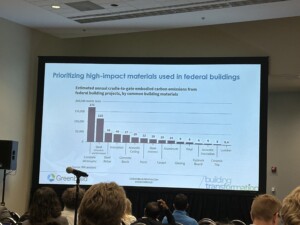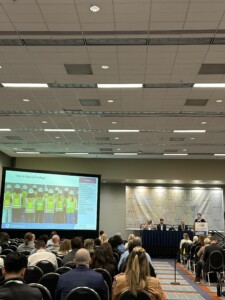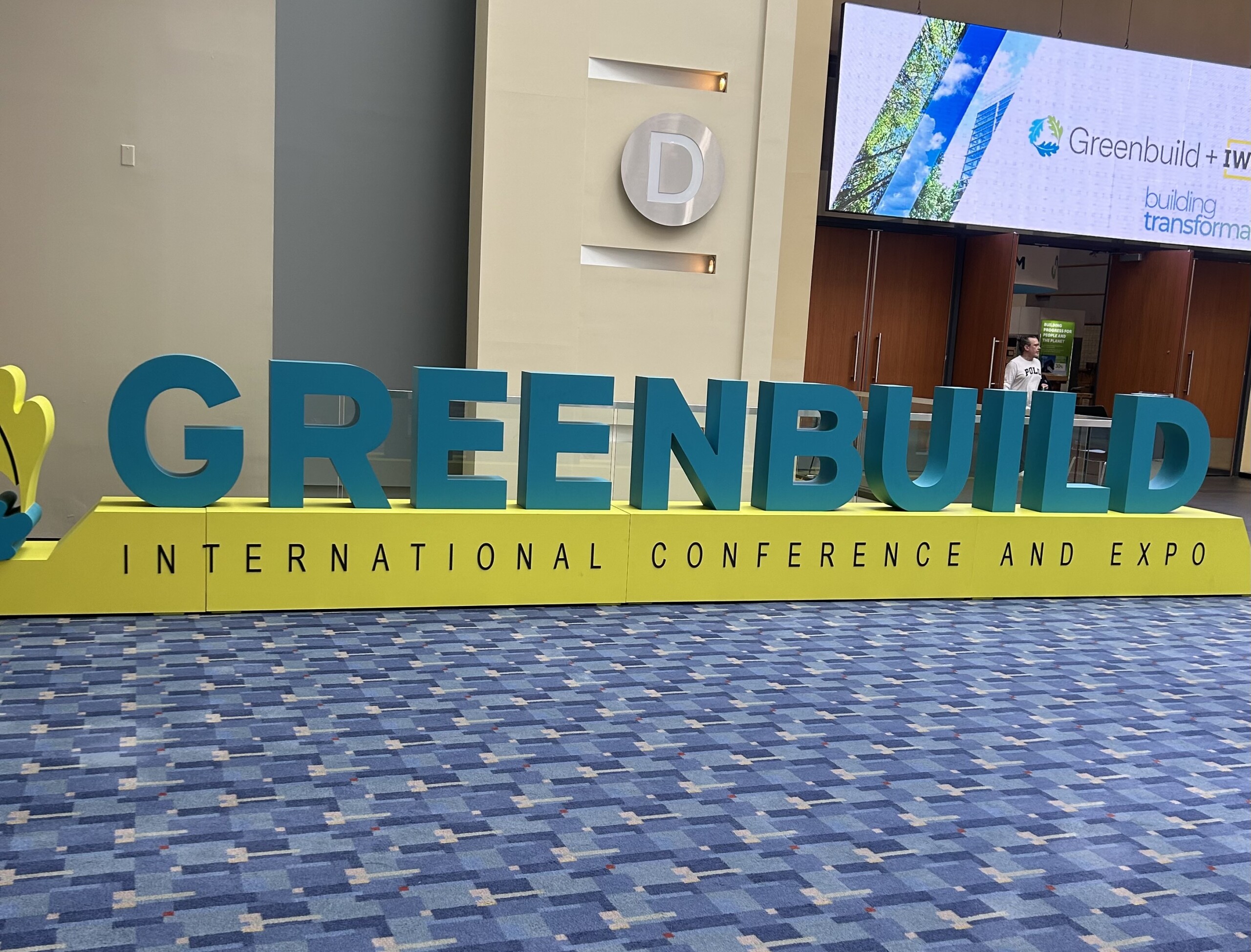This website uses cookies so that we can provide you with the best user experience possible. Cookie information is stored in your browser and performs functions such as recognising you when you return to our website and helping our team to understand which sections of the website you find most interesting and useful.
News
Key Takeaways from Greenbuild 2023 for the Vinyl Industry
Key Takeaways from Greenbuild 2023
It was an action-packed week at Greenbuild 2023. There were nearly 500 speakers, over 200 sessions, and 250 expo booths during the 30th anniversary of the sustainable building conference. Our team attended great sessions on reducing embodied carbon, limiting water waste, sustainable building practices, and overall innovations in building technology that will help push the world forward regarding sustainability. Below are some of our main takeaways for the vinyl industry in the wake of the conference.
- The need to promote the sustainable attributes of PVC is more significant than ever.
 Companies are feeling pressure from customers to use sustainable and sustainably sourced materials. As a result, there is more of a need than ever to promote the sustainable nature of vinyl. Numerous sessions named vinyl as a problematic, non-sustainable material, and with the upcoming UNEP meetings, the vinyl industry must be ready to defend and advocate for itself to cut through the mis- and disinformation spread daily. The VI remains committed to furthering this goal and promoting the positive, life-saving aspects of vinyl on the global stage – but our members must be aware that these attacks are occurring both domestically and internationally and we must be vigilant to continuously educate people on vinyl sustainability.
Companies are feeling pressure from customers to use sustainable and sustainably sourced materials. As a result, there is more of a need than ever to promote the sustainable nature of vinyl. Numerous sessions named vinyl as a problematic, non-sustainable material, and with the upcoming UNEP meetings, the vinyl industry must be ready to defend and advocate for itself to cut through the mis- and disinformation spread daily. The VI remains committed to furthering this goal and promoting the positive, life-saving aspects of vinyl on the global stage – but our members must be aware that these attacks are occurring both domestically and internationally and we must be vigilant to continuously educate people on vinyl sustainability.
- There is an opportunity to highlight our industry successes in the “S” of ESG.
 For years, the focus of ESG has been squarely on the “Environmental” aspect. Climate reports have become the norm, but at this year’s Greenbuild, there was a newfound emphasis placed on “Social”. Numerous sessions mentioned a need for companies to focus on the safety of their employees, and we see this as an excellent opportunity for our industry. Workplace safety has been a focal point for the vinyl industry for years, and we have the data to back it up. Beyond that, ethical sourcing of materials was discussed frequently, and companies should begin to think about messaging surrounding where their materials are sourced from.
For years, the focus of ESG has been squarely on the “Environmental” aspect. Climate reports have become the norm, but at this year’s Greenbuild, there was a newfound emphasis placed on “Social”. Numerous sessions mentioned a need for companies to focus on the safety of their employees, and we see this as an excellent opportunity for our industry. Workplace safety has been a focal point for the vinyl industry for years, and we have the data to back it up. Beyond that, ethical sourcing of materials was discussed frequently, and companies should begin to think about messaging surrounding where their materials are sourced from.
- Third-party verification is vital.
There were many conversations about LCA and EPD data – and a consistent follow-up question was whether every data set coming from potentially biased institutions should be wholeheartedly believed. The answer was the same every time – data must be independently verified. The vinyl industry is already working to integrate a solution to this through the Vinyl Sustainability Council’s +Vantage Vinyl program, which is independently verified by GreenCircle Certified – but companies that produce either LCA or EPD reports need to be prepared to have third parties independently verify their data.
- Scope 3 emissions data is next up.
Everyone knows about scope 1 and scope 2 emissions, and we as an industry have improved at monitoring, tracking, reporting, and reducing them. However, in the coming years, this simply won’t be enough. Supply chain and contractor emissions (this was spoken about at Greenbuild, given its emphasis on building and construction) are two areas where companies should be prepared to gather and report on this data in the coming years. The VSC has proposed expanding its +Vantage Vinyl program to include a supply chain verification aspect to show customers that the entirety of your supply chain acts in accordance with our Guiding Principles – but individual companies must be prepared for scope 3 emissions data to become the norm.
- There is a huge market for building retrofits, and PVC can help.
One presenter at Greenbuild claimed that upwards of 40 million residential homes could be altered and retrofitted with new products to make them more sustainable. Single-family homes emit 61% of the total building emissions (according to the same presenter), so switching out old and aging products for cutting-edge new ones has the potential to make a significant impact on household emissions. We see this as a great opportunity for the vinyl industry to pitch its products as long-lasting solutions that are proven ways to reduce construction’s carbon emissions, both during installation and throughout its lifespan.
- While the “S” of ESG is growing, companies can’t lose sight of the “E”.
 Our team noticed that, while “Social” was discussed more than in previous years, many educational sessions were still focused on decarbonization and sharing best practices. Operational and embodied carbon was discussed at length, and we believe our industry has a great story to tell about our products due to their long life spans. The industry will need to drill down on this topic and continue to craft our messaging to ensure that we’re cutting through the disinformation and educating as many stakeholders as possible that PVC has lower carbon emissions than many of its competitor materials.
Our team noticed that, while “Social” was discussed more than in previous years, many educational sessions were still focused on decarbonization and sharing best practices. Operational and embodied carbon was discussed at length, and we believe our industry has a great story to tell about our products due to their long life spans. The industry will need to drill down on this topic and continue to craft our messaging to ensure that we’re cutting through the disinformation and educating as many stakeholders as possible that PVC has lower carbon emissions than many of its competitor materials.


